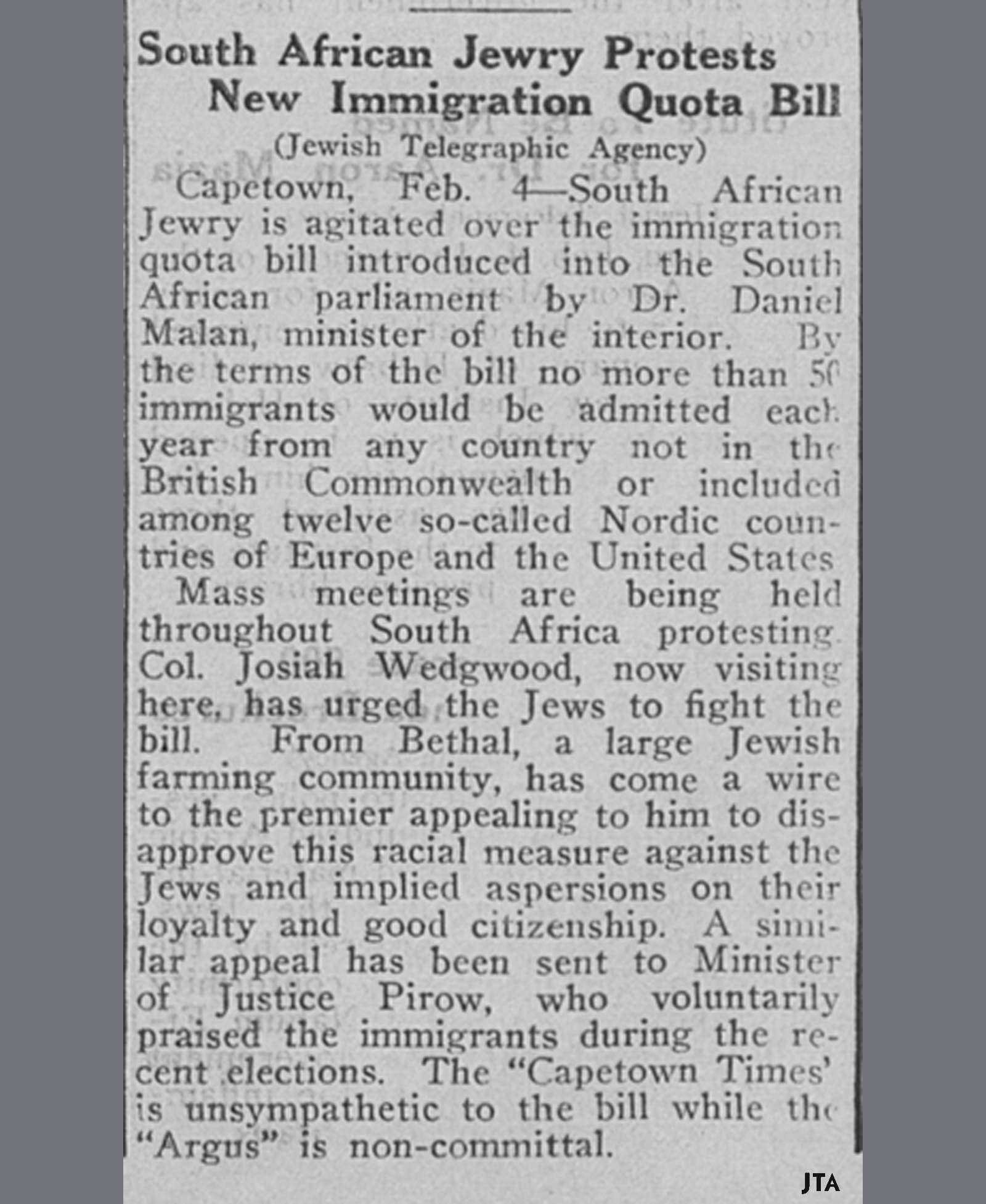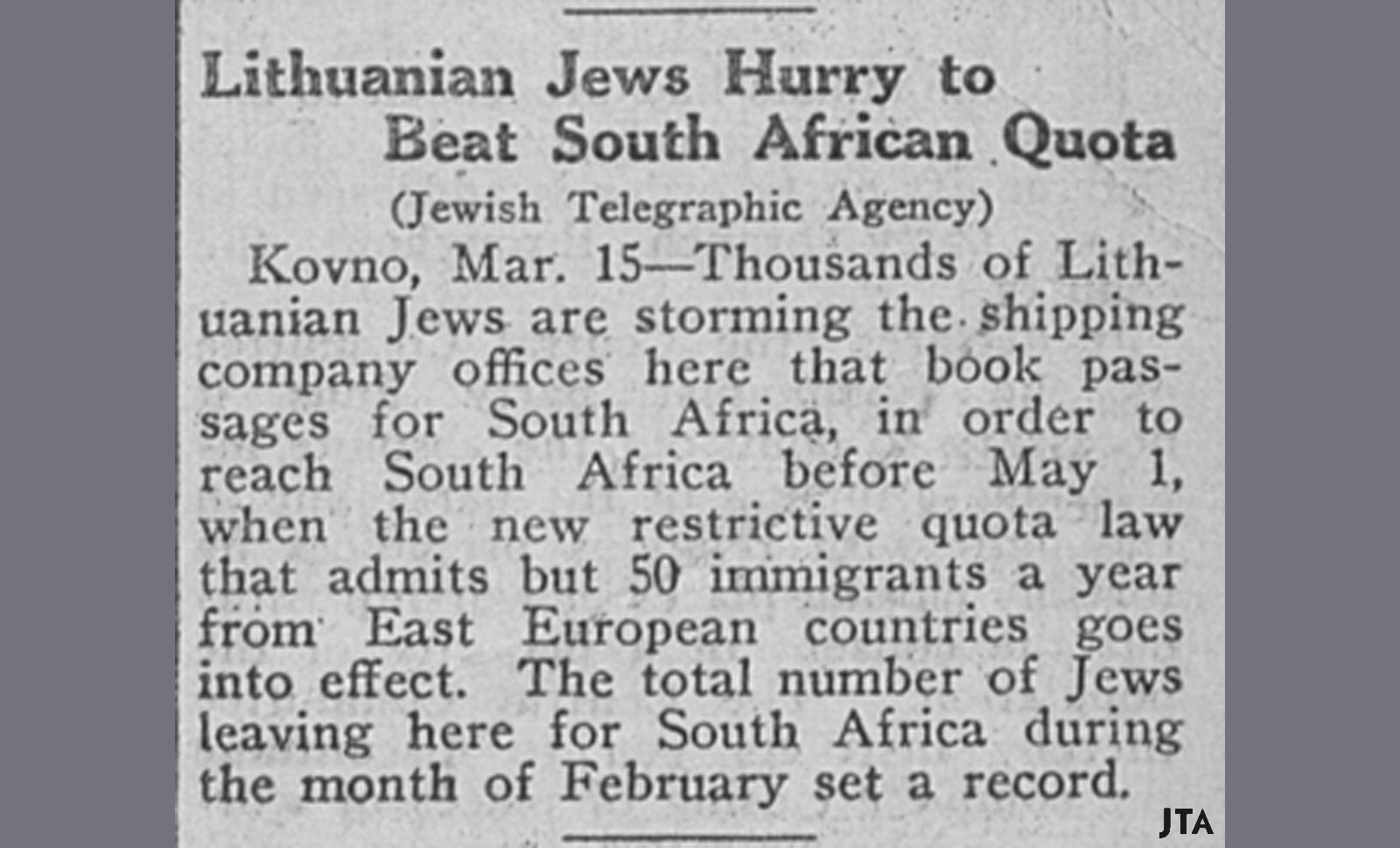South Africa
(Africa)
Unlike many countries at the time, South Africa’s economy was not as hard hit by the Great Depression. This was because it was the world’s biggest gold producer at the time, and could legally exploit
black mineworkers. Most of the white population prospered. But the government's racist and discriminatory policies denied all those it did not classify as “white” the same opportunities and, thereby, prosperity.
Immigration laws to curb the entry of Jews were enacted as early as 1930. Jewish immigration came to an almost complete halt in 1937 due to public sympathy towards Nazi Germany.

Credit: Jewish Telegraphic Agency - story may not be reproduced without JTA's permission. For more information, access www.jta.org.

Credit: Jewish Telegraphic Agency - story may not be reproduced without JTA's permission. For more information, access www.jta.org.

Credit: Jewish Telegraphic Agency - story may not be reproduced without JTA's permission. For more information, access www.jta.org.
Economy
In the 1930s, South Africa was governed by a white minority and had gained political independence as a territory in the British Commonwealth. The country’s rural areas were affected by the Great Depression. But South Africa was rich in natural resources. It was the world’s largest producer of gold. South Africa’s earnings from gold exports quickly rose in the early 1930s after Great Britain and the United States abandoned the gold standard. The gold standard is when a standard unit of money is a specific amount of gold, or is tied to that fixed amount. New industries were established, and South Africans of all races flocked to towns. However, while the standard of living was improving for most whites, segregationist policies kept people of color and Indians from prospering.
Segregation
Laws had been in place since the 1910s to segregate black, Indians and Colored South Africans from whites. The Natives’ Land Act of 1913 defined less than one-tenth of South African territory as black “reserves” and prohibited any purchase or lease of land by blacks outside the reserves. The 1923 Natives (Urban Areas) Act restricted black migration into towns. This laid the groundwork for urban residential segregation. The government also sought to tighten control of black workers by creating laws that severely curtailed black economic freedom. These laws included a ban on forming unions. In 1936 the Representation of Natives Act created a separate election for blacks. But, they could only vote to elect three white representatives to the House of Assembly.
Immigration
The Quota Act of 1930 was passed to limit the entry of Jews, who were coming mainly from Lithuania. Entry was restricted again in 1937 as the number of German Jewish refugees increased. The Alien Act of 1937 brought immigration almost to a complete halt. Fewer than 7,000 Jews entered South Africa between 1933 and 1939. These policies were prompted by government and public approval of Nazi Germany.